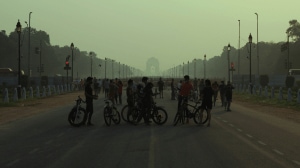All’s well on the Konkan coast
With some technical tweaking, four wells in a dry Konkan village double up as rainwater storage tanks

With some technical tweaking, four wells in a dry Konkan village double up as rainwater storage tanks
MOST of the villages in the Konkan belt spend their summers worrying about water but not Velneshwar. This village, 17 km from Guhagar and 370 km from Mumbai, has found a way out of its worries. The village on the Ratnagiri coast is home to four wells that double up as a rainwater storage tanks. Arguably the first of its kind of project, it has made Velneshwar a self-sufficient village with wells that store more than two lakh litre of water per well.
Gopal Gokhale is a resident of Velneshwar whose main source of income is from his lodge Bhakta Niwas that accommodates visitors who come to a small Shiva temple in the village. “Initially we used to work only for four months because of the water problem. With the completion of the well, water is available throughout the year enabling us to serve the visitors for all 12 months,” says Gokhale.
Four years ago, however, this was not the case. The Konkan region of Maharashtra enjoys prosperity only during the four months of monsoon. The rest of the year villagers battle heat and the women walk miles in search of water.
The turning point came in 2004 when Ram Chandra Dattatreya Pratishthan, a family Trust, chose Velneshwar to carry out social work. Dr Chandrashekhar Gadgil, former professor, College of Engineering, Pune, and a key member of the trust came to study the water situation at Bhakta Niwas. He then involved his friend Ravindra Nene, an engineer and consultant, and both together gave Velneshwar its first double barrel well. The engineering feat changed the way the village stored water.
They realised that storing water the conventional way was not a solution to water shortage during the summers. “We had tried both the options—storing the water by constructing the bund and the second one—by using plastic tanks for water storage. While the water collected due to the bund used to get absorbed in the soil after the monsoon, limited storage capacity of the water storage tank would result in an insufficient water storage,” says Nene. “The lodge had a well with the water level touching the bottom. We realised that inside the well there is an entire column above the water level that is empty and can be used for storing water,” adds Nene.
To avoid percolation of water into the soil at the bottom of the well, we decided to construct a cement-concrete slab above the average water level. This served two purposes: one that the column of well above the slab could act as a huge tank for water storage and second, we could avoid water losses due to absorption in the soil,” says Nene.
The success of this two-storeyed well has over the years inspired the villagers to apply the same technique at other wells in the village. To overcome cost concerns, local labourers were used for construction even as bricks made of local soil replaced concrete bricks.
Now Velneshwar hosts four wells constructed using the same technique. The project has made Velneshwar a self-sufficient village with wells that store more than two lakh litre of water per well. From spending Rs 3 per litre, by storing water the conventional way, and even then facing a water crisis, the villagers now have water through the year at Re 1 per litre.
“Because of this technique even if every well in Velneshwar stores 10 mm of rainwater, they will be able to store 850 lakh litres which is more than sufficient for the entire village,” says Gadgil.






- 01
- 02
- 03
- 04
- 05

























